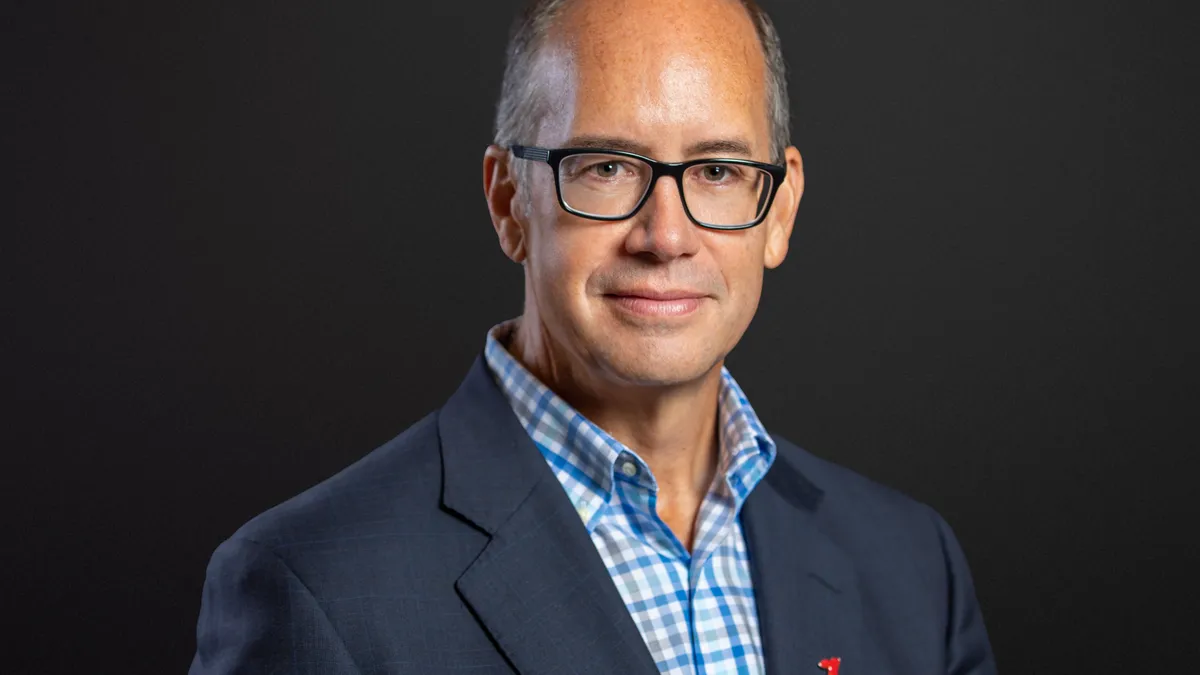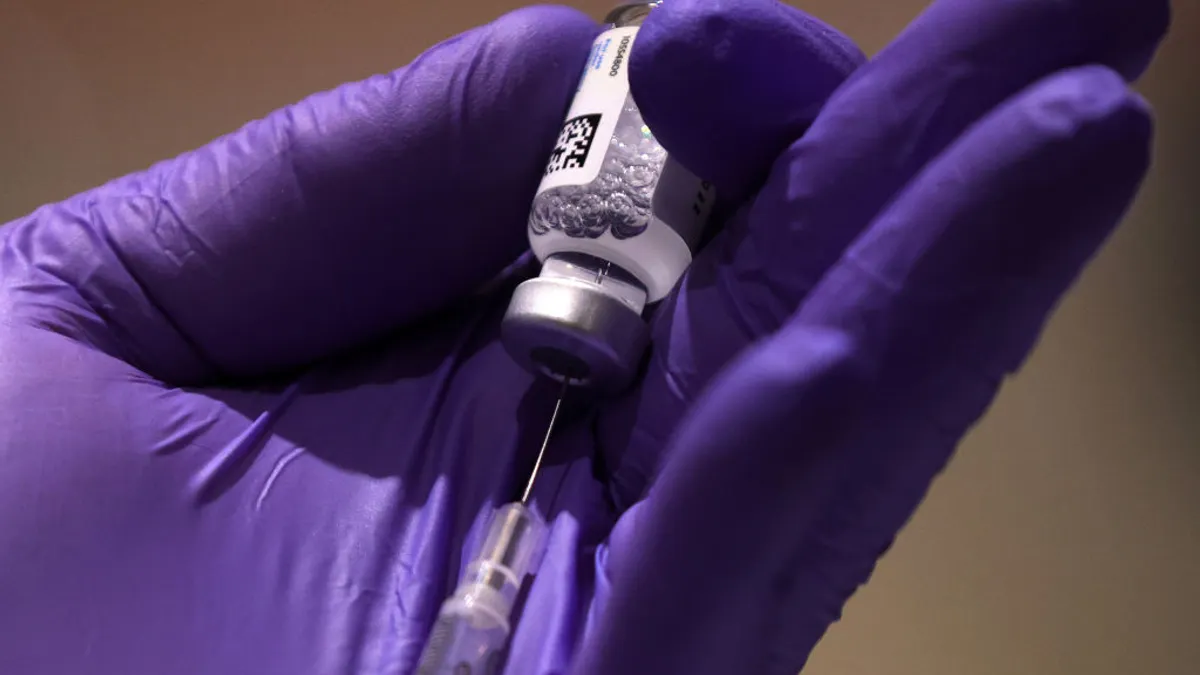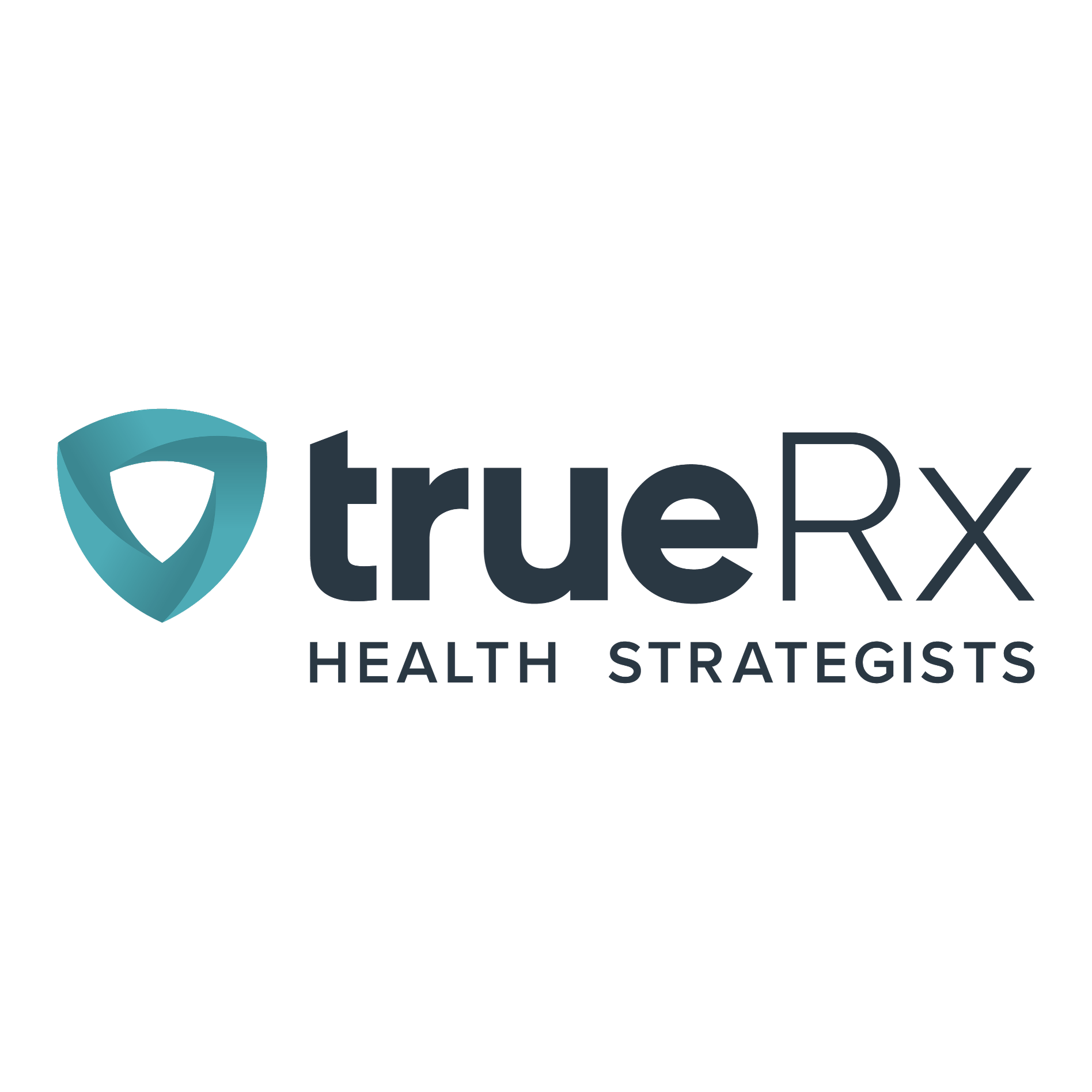Few in the industry have as much “inside baseball” expertise on clinical research as Peter Benton. As president and co-CEO of Worldwide Clinical Trials, a global research organization, Benton is on the frontlines of major shifts in pharma R&D. And decades of experience across major roles at J&J, BioClinica and more have given him a long-range view of where the industry has been — and where it’s headed.
That doesn’t mean Benton is never surprised by how things change. If you told him five years ago that psychedelics would become a “big part” of Worldwide’s business, Benton said he would have been “suspicious.”
Benton, who remembers what it was like when the sector first began moving from paper to electronic processes, said he’s also been amazed at how far and how quickly tech advances like AI and cutting-edge therapies have come.
To dial in further to these shifts, the company revamped its bioanalytical lab last year into a “state-of-the-art” facility in Austin that includes large-molecule capabilities.
"I still think we only know 10 or 15 percent of how the human body works."

Peter Benton
President, co-CEO, Worldwide Clinical Trials
“Ten or 15 years ago, there were a lot of generics and small molecule studies going on. Now, large molecule, and cell and gene therapies, are changing the landscape,” he said. “So our phase 1 unit has evolved.”
Still, amid the rapid changes in the industry and growth at Worldwide, the company has continued to stand on pillars of drug development services in major therapeutic areas such as oncology and rare diseases.
Here, Benton shares his bird’s-eye view of pharma’s evolution, what major shifts in the industry — such as the growth of mid-sized companies — mean for drug R&D, and the vexing issues he discusses with other CRO execs.
This interview has been edited for brevity and style.
PHARMAVOICE: What are some of the prevailing trends you’re seeing in the clinical trials space?
PETER BENTON: When I look at the broader macroeconomic view of the industry, the growth of the emerging to mid-sized biotechs is bigger than we realize. In my J&J days over 20 years ago, large pharmaceutical companies dominated our landscape — the Pfizers, the GSKs, the Amgens and others. Now, there are 5,000 emerging to mid-sized biotechs. Five thousand. And that number is expected to double and potentially quadruple in the next 10 to 15 years. And so, the future of our industry are these emerging to mid-sized biotechs.
And the industry is expanding. We’ve gone from treating symptoms of diseases (to) treating diseases at the cellular level, at the molecular level. We’re understanding pathways and signaling. We’ve got gene editing, gene splicing, all sorts of new tools at our disposal. I still think we only know 10 or 15 percent of how the human body works but when you look at all the things that are happening — from mRNA vaccines to stem cell treatments and gene therapies — it truly is a brave new world of clinical research.
At the same time, the industry is becoming dominated by these emerging to mid-sized biotechs and so there’s just so much growth, so much potential, so much to do and learn.
How does this emerging landscape of smaller companies affect that biotech, CRO partnership?
The emerging to mid-sized biotechs need to move quickly. They’ve got a limited amount of cash. So they need to make progress as fast as possible to figure out if their drug works because that’s the future of their company. And so, you’ve got some of the speed and urgency that’s coming from the emerging to mid-sized biotechs and then large pharmas and biotechs still provide a lot of funding and ideas and exploration into new areas.
And software development, AI and all these other technologies — the innovations come from these providers. There’s a lot of DCT companies out there. Will they all survive? I’m not so sure. But they’re all doing their part to help us advance how we do clinical research.
When it comes to a good partnership, trust is No. 1. What else goes into a good partnership?
Communication is so fundamental. It takes face-to-face meetings, making sure the personalities are right on the teams on both sides, feedback both from the sponsor to us as the CRO and us as the CRO back to the sponsor to make sure that we are all focused on the right things. And being very transparent about the goals and objectives that they’ve committed to for their board or investors.
You have 3,000-plus employees now around the world. From a leadership perspective, what are some of the biggest challenges in managing a global team like this? What keeps you up at night?
Culture is important. I’ve worked for large companies and I don’t want to work for a large bureaucratic company. I don’t think our employees do either. So it’s about making sure we can move quickly and make decisions fast with the appropriate controls and risk mitigation in place. But I want to make sure that we preserve the culture we have at Worldwide, which is very inclusive and global.
How do you keep that kind of culture intact?
It’s attitude. You have to choose to be that way and not be disconnected from your employees or from your customers. I can’t talk to every single employee or customer, but I and my team and other leaders spend a lot of time in meetings having ‘let’s talk’ sessions. And we’re making sure we’re trying to figure out what’s not working. I don’t need to know what I’m doing a good job of. That’s certainly helpful and I’ll keep doing those things but it’s more important to know what we’re not doing or what someone has seen at another company that’s valuable that we should think about doing.
There’s a healthy competition among CROs, but at the same time, you all belong to the same fraternity. When you talk to your peers, what concerns do you discuss at that high level?
When I reach out to my colleagues, we talk about the challenges we face because we’re in a tough business. Clinical trials never go to plan. All of the best assumptions we make around sites, patients, recruitment rates, grants or whatever — they’re all wrong at the end of a trial.
Russia and Ukraine was a prime example. We’ve got some fantastic people on the ground in Russia and in Ukraine. We’re running studies, doing research in both those countries. A war breaking out in the middle of research is difficult. How do you protect your employees? How do you protect patients? How do you make sure the teams make forward progress on the diseases that are counting on those countries? That’s been something we’ve talked about.
We also talk about the workforce, wage inflation and hiring. Unfortunately, you can go online and learn how to fake your way into being a (clinical research associate). There are people out there trying to get a CRA job that actually don’t have the experience. There are co-employment opportunities where people are working for multiple companies at the same time.
So our whole industry continues to grow rapidly and we have to train the next generation of employees that hopefully want to come into research and get the right skills and training.
As you look to the future, what’s on your watchlist?
We’re always trying to figure out where research is going. I never would have thought this was coming but I’m pretty sure we’ve done more psilocybin psychedelic research now than any other CRO in the world.
And then we know all these different therapeutic areas are interconnected. Inflammation is an important area of research on its own but we know it has an effect in other diseases — whether it’s Alzheimer’s or other CNS disorders.
So understanding the next wave of research and how we’re going to help patients make progress in their diseases is important to keep an eye out on.



















